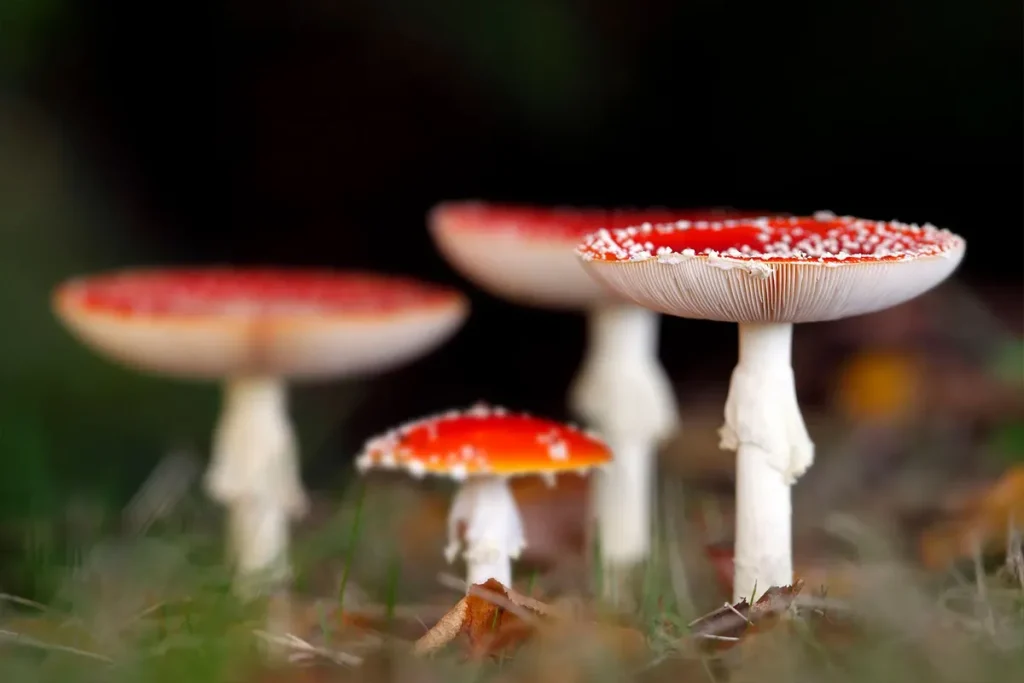The Mystical World of Amanita Muscaria: What You Need to Know

If you’ve ever seen a red mushroom with white spots in a fairytale drawing or holiday decor, odds are you’ve already met amanita muscaria. This mushroom is as eye-catching as it is controversial, thanks to its history in traditional ceremonies, its psychoactive compounds, and its unique chemical properties. But there’s a lot more to it than the cartoon version most of us picture.
Introduction to Amanita Muscaria: An Iconic Mushroom
Amanita muscaria—called fly agaric by mushroom folks—is one of the most recognizable fungi on the planet. With its bright red cap and scattered white spots, it’s basically the poster child for “magic mushrooms,” even though its effects and chemistry are different from the psilocybin mushrooms you might be thinking of.
This mushroom grows in many parts of the world, from Siberian forests to North America and Europe. You’re most likely to spot one near birch, pine, or spruce trees. The connection with these trees isn’t random—Amanita muscaria lives in a sort of partnership with their roots, helping each other get nutrients. This relationship is part of what makes it such a frequent forest resident.
Beyond its striking appearance, Amanita muscaria has made its way into pop culture, fairy tales, ancient rituals, and even holiday legends. More on that soon.
Toxicity and Psychoactive Properties
Here’s where things get real interesting—and potentially risky. Amanita muscaria isn’t your average backyard mushroom. It contains two main active compounds: muscimol and ibotenic acid. These aren’t the same as the psilocybin you find in “magic mushrooms.” They affect the brain differently and can cause a mixed bag of effects.
Compounds and Effects
Ibotenic acid acts as a neurotoxin and can cause nausea, confusion, or delirium. But when the mushroom is dried or cooked, the ibotenic acid can convert into muscimol, which leads to psychoactive effects—think altered perception, strong dreams, or feeling very sleepy or very active, depending on the person and the dose.
Experiences are inconsistent, which is part of the reason Amanita muscaria is so tricky to deal with. Some people report a spiritual or dream-like effect. Others just feel sick. The effects can last several hours and, in some cases, come with lingering discomfort.
Preparation Methods
Traditionally, those who consumed Amanita muscaria knew to boil or dry it first. Boiling helps remove some of the water-soluble toxins, while drying helps reduce ibotenic acid levels by turning it into the less harmful muscimol. Still, this mushroom should never be consumed casually—preparation is complex, and the outcomes are unpredictable.
Safety Considerations
This can’t be stressed enough: Amanita muscaria is not safe for uninformed use. While deaths from this mushroom are rare, poison control centers still get calls from people who didn’t know what they were getting into. The effects can vary drastically based on factors like preparation, quantity, and individual sensitivity.
Cultural Significance and Folklore
Amanita muscaria isn’t just noteworthy for its chemical effects—it shows up all over the place in ancient stories and artwork. It even has connections to some modern-day traditions you might not expect.
Shamanic Traditions
Indigenous groups in Siberia—particularly the Evenki and other nomadic cultures—used Amanita muscaria for trance-like states. Shamans would consume the mushroom during ceremonial rituals to communicate with the spirit world or achieve altered states of consciousness. In some cases, they would feed the mushroom to reindeer and then drink the animal’s urine, which contained the active psychoactive compounds but fewer toxins. As odd as that sounds, it was safer than consuming the mushroom directly.
Folklore Connections
Some researchers argue that these practices influenced parts of modern Christmas mythology. Think about this: a red-and-white symbol that shows up in cold, northern regions… associated with flying reindeer, no less. Coincidence? Possibly, but it’s fun to speculate. Some people even suggest that the idea of Santa Claus himself—traveling through the sky in a sleigh pulled by reindeer—may have roots in these ancient fly agaric traditions.
Other cultures saw the mushroom as magical, dangerous, or both. From Viking legends to Disney-style fairy tales, its look alone made it a go-to symbol of enchantment or warning.
Regulatory Status and Safety
So what do modern agencies think of Amanita muscaria? Not much in terms of approval. In the U.S., it’s not considered safe or legal for consumption as a food ingredient, according to the FDA. That doesn’t mean it’s banned for all uses, but you won’t be finding it in your local grocery store—or, at least, you shouldn’t.
FDA Guidelines
The FDA doesn’t approve Amanita muscaria for food use, and very few places sell it openly. Where it’s legal to possess, it’s only sold for decorative or ceremonial use, not for eating or ingesting. Even in places without specific bans, it’s still advised to avoid it unless you really know what you’re doing—like, expert-forager level knowledge.
Health Risks and Precautions
The biggest risks come from misuse or misidentification. For starters, inexperienced mushroom hunters could mix it up with other, more dangerous mushrooms. On top of that, improper preparation can lead to extreme discomfort or a bad reaction.
This mushroom is especially risky for children and pets, who might be attracted to its cartoon-like appearance. It’s best admired from a distance unless you’re deeply educated on its effects and safety techniques.
User Experiences and Anecdotal Reports
Some folks on forums like Reddit or Erowid have shared their personal takes on using Amanita muscaria. And let’s just say, it’s a mixed bag. Some claim they achieved intense dream states or meaningful introspection. Others describe vomiting, confusion, or flat-out unpleasant experiences.
Positive and Negative Experiences
On the more positive end, users often say they felt “detached from the body” or had vivid internal visions. Others used terms like calming, meditative, or mind-opening. But just as many recount feelings of nausea, disorientation, and mood swings.
It’s important to note that these experiences are not medically verified, and a fair number of them ended with some version of, “Don’t try this unless you’re an expert” or “I won’t be doing this again.” That alone says a lot.
Future Research Directions
Science hasn’t fully caught up with the mystery of Amanita muscaria. Most research focuses on the individual chemicals rather than whole mushroom effects. There’s curiosity among researchers about muscimol’s potential neurological impact, especially in low doses, but trials in humans are extremely limited.
For now, much of what we know comes from a mix of cultural history and firsthand reports, so the urge to know more is understandable—but we’re not there yet when it comes to understanding exactly how (or if) Amanita muscaria could be used therapeutically or safely.
Conclusion: Navigating the Mystical World of Amanita Muscaria
Amanita muscaria is strange, beautiful, and historically fascinating, but it’s also unpredictable and potentially dangerous. Its striking look has made it iconic across cultures, and its effects continue to draw interest from mushroom lovers and researchers alike. But unless you’re deeply knowledgeable—or working with someone who is—this mushroom is better enjoyed from a distance, perhaps as part of folklore or art rather than on your plate or in your tea.
If you’re curious, do your homework, talk to experts, and tread lightly. Nature may be magical, but it doesn’t always come with clear labels—and Amanita muscaria is a perfect example of that.






